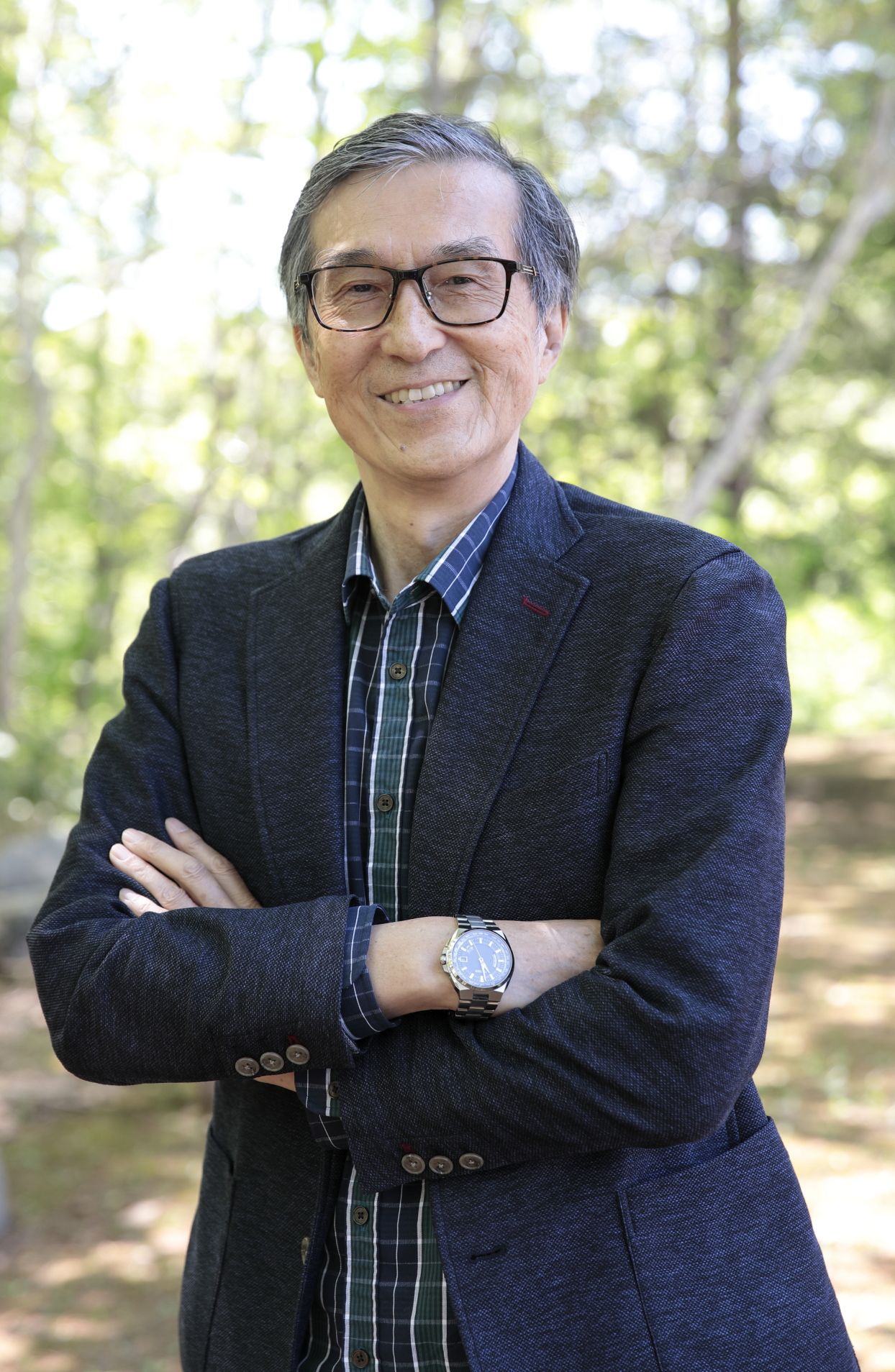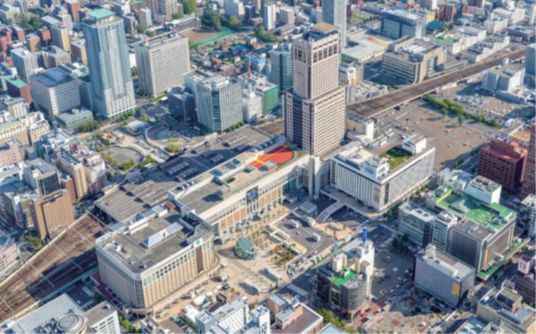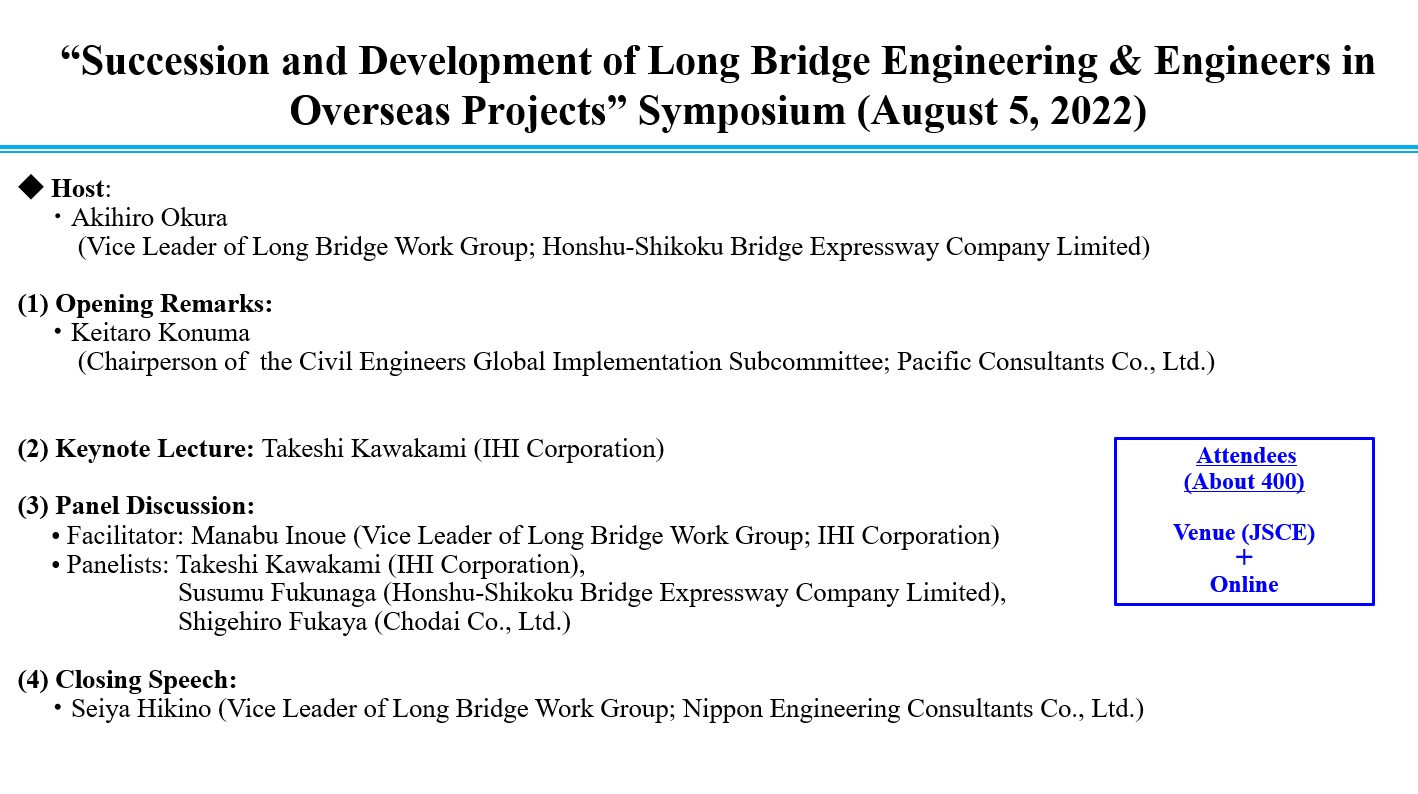IAC News
IAC News No.120, October 2022
Japan Society of Civil Engineers International Activities Center October 3, 2022 IAC News No.120
Collaboration between the Architectural Institute of Japan and JSCE

Tamon Ueda
(110th President of the Japan Society of Civil Engineers)
*Photographer: Rumiko Ito
The fields of civil engineering and architecture are fields that people outside these areas of expertise find difficult to distinguish. Nevertheless, they are clearly divided as fields of education and research, industries, and government departments. The two fields have been clearly distinguished ever since the Architectural Institute of Japan(AIJ) was founded in 1886.
Both architecture and civil engineering are fields that cover a wide range of expertise, and the papers of the AIJ are broadly divided into the categories of structure-related (including materials and construction), planning-related, and environment-related. Meanwhile, the papers of JSCE are divided into the categories of structure-related, hydraulic-related, geological-related, planning-related, material-related, construction-related, and environment-related. Architecture and civil engineering are both comprehensive disciplines that include elements of social science. As you can tell from the names of the categories, the broad structural, planning, and environmental disciplines, including materials and construction, are common to both academic societies. For example, in my area of expertise, there is the Japan Concrete Institute, where experts in both civil engineering and architecture work together. At JSCE and the AIJ as well, there are experts in the field of concrete that engage in committee activities separately. The fact that architecture and civil engineering are both comprehensive academic disciplines and that some of the individual academic disciplines exist in both fields are two characteristics that JSCE and the AIJ have in common.
The Memorandum of Understanding signed between the two societies in November 2021 saw the establishment of a Joint Task Force (TF) to publicly implement joint activities between the two societies. Although the two academic societies primarily faced similar issues, they did not have a way in which to regularly and publicly collaborate to tackle these issues. The TF, which consists of experts from both academic societies, engaged in lively discussions and decided on what issues should be tackled together. A work group was then established to tackle the following six issues: (1) conducting an awareness survey of the members of both academic societies regarding collaboration, (2) examining the social value of civil engineering and architecture and a vision for collaboration, (3) linking up to tackle disasters, (4) taking carbon-neutral measures, (5) promoting digital transformation (DX), (6) creating fundamentals for civil engineering and architectural design. These are difficult issues that cannot be dealt with completely by academic societies in the specialized fields common to both civil engineering and architecture (societies such as the Japan Concrete Institute), and it is not sufficient for both JSCE and the Architectural Institute of Japan to address them separately. While natural disasters such as floods and geological disasters, which have occurred frequently in recent years, are phenomena explained in the field of civil engineering, it is regions that include cities and so on with both civil engineering and architectural structures that suffer damage. Linking up to tackle disasters is only possible when civil engineering and architecture, which are comprehensive academic disciplines, come together to collaborate. In the DX space, Construction Information Modeling (CIM) and Building Information Modeling (BIM), which are an identical IT technology, are being deployed separately in the civil engineering and architecture fields. However, in cases when civil engineering and architecture facilities are integrated, it is obvious that consistency between CIM and BIM would be more convenient.
The issues highlighted above are issues of social importance that go beyond civil engineering and architecture. If benefits can be produced that are visible from a social perspective, we can expect these benefits to help save the civil engineering and architecture fields, which domestically are in decline in comparison to other engineering fields and internationally are in decline in terms of research findings and technological development. To actively highlight the benefits of this collaboration to society, JSCE plans to publish information online and both societies plan to regularly include joint features in their respective journals. I look forward to hearing what you think via the JSCE feedback page (https://committees.jsce.or.jp/chair/).

Sapporo Cityscape
The Civil Engineers Global Implementation Subcommittee
Long Bridge Working Group
“Succession and Development of Long Bridge Engineering & Engineers in Overseas Projects” Symposium
(August 5, 2022)
1. Introduction
At present, the Civil Engineers Global Implementation Subcommittee is engaged in work group activities for each of its six themes. The Long Bridge Working Group is conducting research on and examining possibilities for making long bridge engineers and engineering more internationally-minded. This symposium, which was organized as a part of the Long Bridge Working Group’s activities, was held on August 5, 2022. On the underlying theme of training engineers and developing technologies in Japan relating to long bridges, the symposium aimed to reflect on the timeline and achievements of Japan’s rise to prominence on the global stage in national marine bridge projects and to discuss what initiatives and preparations are required to ensure greater global development from here on.
2. Symposium Overview
This symposium was made up of a keynote lecture and a panel discussion. Taking part as a keynote lecturer/panelists were three engineers with a wealth of experience and extensive track record in long maritime bridge projects overseas. As this symposium was held both in person and online, it proved to be a big event, with roughly 400 people in attendance from Japan and overseas.
(1) Keynote Lecture
Mr. Takeshi Kawakami (IHI Corporation) spoke on the topic of “Continuous Rollout of Bridge Projects in Turkey With the Use of Long Bridge Engineering”. He explained the backstory to initiatives such as the Fatih Sultan Mehmet Bridge (Second Bosphorus Bridge) and the New Golden Horn Bridge Construction Project, as well as large-scale maritime bridge projects overseas. He also introduced multiple case studies on long bridge technologies, training engineers, and passing on relevant skills to the next generation. Mr. Kawakami also gave his thoughts on overseas expansion and the outlook for the future.
(2)Panel Discussion
On the topic of “The Passing On & Growth of Long Bridge Engineering - With a Focus on Engineers”, the three panelists, from their respective positions as a manager, contractor, and consultant, gave their thoughts and discussed topics such as (1) the conventional training of human resources and approach to picking out talent, the link between skills and engineers, as well as (2) the future deployment of Japanese long bridge engineering in the global market, training of engineers, and how to pass on the relevant skills to future generations.
3. Construction
Following on from this symposium, the Long Bridge Working Group will also examine and plan activities such as interviewing experts, holding related events, and visiting the construction sites of overseas projects. The working group aims to establish opportunities for each member to determine their own vision on how they can succeed on the international stage by gaining various experience and knowledge through engaging in these international activities.
Lastly, I would like to take this opportunity to say a warm thank you for the hard work of the committee, working group members, International Activities Center, keynote lecturer, panelists, and everyone else involved in helping to make this symposium a great success.
[Symposium Program]

【Reported by Seiya Hikino, Business Department, Overseas Business Division,
Nippon Engineering Consultants Co., Ltd. 】
Updates
◆JSCE-ASCE Infrastructure Resilience Research Group
https://www.infraresil.jp/
◆The 4th International Conference on Transportation Infrastructure and
Sustainable Development (TISDIC 2023)
https://tisdic2023.dut.udn.vn/
◆JSCE Feedback Web Form「多門に多聞&多問」
https://committees.jsce.or.jp/chair/node/59
◆IAC “News Pick Up!!” on the JSCE Japanese website
– A Compilation of Japan’s Greatest Projects in Transfer of Civil Engineering Technology in Service –
http://www.jsce.or.jp/e/archive/
◆IAC “News Pick Up!!” on the JSCE Japanese website
https://committees.jsce.or.jp/kokusai/iac_dayori_2022
◆Summary of featured articles in JSCE Magazine Vol. 107, No.10 October 2022
http://www.jsce-int.org/pub/magazine
◆Journal of JSCE
https://www.jstage.jst.go.jp/browse/journalofjsce
◆The 4th Asian Concrete Federation (ACF) Symposium on Emerging Technologies for Structural Longevity (ACF2022_ETSL)
https://acf2022.aconf.org/index.html
◆The 9th International Conference on Flood Management (ICFM9)
https://www.icfm9.jp/index.html
Subcription
The IAC News is one of the communication tools to share information and ideas with the members. We would like to invite you, your friends and colleagues to join the communication and to subscribe the IAC News. Please register online: (http://www.jsce-int.org/node/150). We look forward to meeting you.
